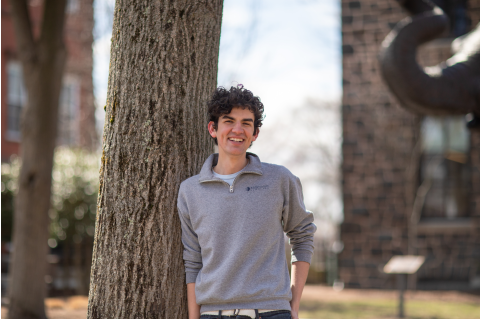Mathematics
Spring: n/a
Summer: n/a
Overview
All our professors are active in research, which provides many choices of research areas for our doctoral students. The department has numerous research clusters constituting particular areas of strength, including:
- Algebra, Representation Theory, Algebraic Geometry
- Analysis and PDEs
- Computational and Applied Mathematics
- Dynamical Systems
- Geometric Group Theory and Topology
- Probability
At the same time, our faculty is devoted to teaching and mentoring of students. Our graduate courses and research seminars provide a great atmosphere for collaborative learning and research.
Program Outcomes
Our PhD in Mathematics consists of preliminary coursework and study, qualifying exams, a candidacy exam with an advisor, and creative research culminating in a written dissertation and defense. All doctoral students must also do some teaching on the way to the PhD.
Upon graduation, you will have an in-depth understanding and mastery of the literature in at least one particular subfield of mathematics (and applied mathematicians will also demonstrate mastery of their area of application). You will also have the skills to develop research proposals, carry out independent research and present and defend your research work in oral, written and graphic forms. Our students also gain valuable teaching experience and learn how to conduct a classroom and grade undergraduate work. Perhaps most importantly, you will develop an understanding of your professional and ethical responsibilities as well as an appreciation of the impact of mathematics in the social context.
Graduates of the PhD Program have gone on to work in the following positions: staff scientist, senior software engineer, technical writer, and research engineer. Others have gone on to academic positions such as postdocs and tenure-track professor positions.
Application Requirements
- Application fee
- Resume/CV
- Personal Statement (750 words or less): This statement should include your reasons for wanting to pursue graduate study at Tufts and within the Department of Mathematics. Discuss what makes mathematics exciting to you. In addition, please include a description of a math problem or topic that challenged you early in your undergraduate experience. Discuss how you, perhaps with the help of others, overcame those difficulties to understand the problem better and how you presently understand it. Do not be afraid to choose something from a "basic" class like calculus. Your application materials already speak to your achievements; here instead we are interested in hearing about how you have developed your interest in mathematics. Please limit your statement to 750 words or fewer.
- Official TOEFL, IELTS, or Duolingo English Test, if applicable
- Transcripts
- Three letters of recommendation
Tuition and Financial Aid
See Tuition and Financial Aid information for GSAS Programs.
Student Spotlight
Career Outcomes
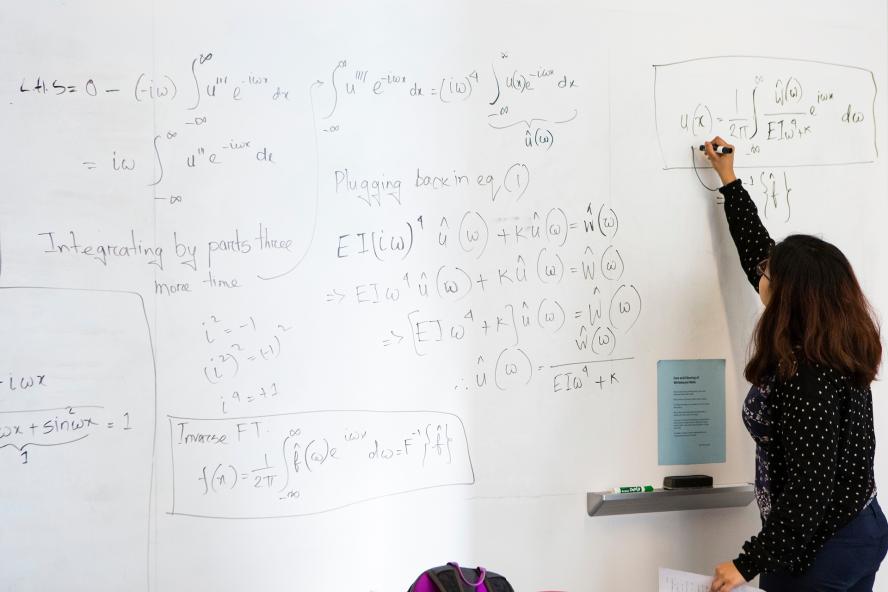
Average Salary: $90K - $110K
Average Age: 27
*Sources: GSAS-SOE Graduate Exit Survey 2020 - 2021 and Academic Analytics (Alumni Insights)
Faculty
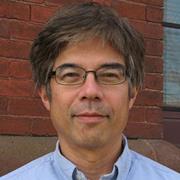
Fulton Gonzalez

Fulton Gonzalez
Research/Areas of Interest: Noncommutative harmonic analysis, representations of Lie groups, integral geometry, and Radon transforms
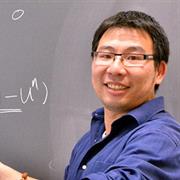
Xiaozhe Hu

Research/Areas of Interest: Scientific computing and numerical analysis; Parallel multigrid and multilevel methods for large-scale coupled systems; Efficient numerical methods for reservoir simulation, fluid-structure interaction, and other applications.

James Adler

James Adler
Research/Areas of Interest: Scientific computing and numerical analysis: Efficient computational methods for complex fluids, plasma physics, electromagnetism and other physical applications.

Bruce Boghosian

Bruce Boghosian
Research/Areas of Interest: Applied dynamical systems, applied probability theory, kinetic theory, agent-based modeling, mathematical models of the economy, theoretical and computational fluid dynamics, complex systems science, quantum computation Current research emphasis is on mathematical models of economics in general, and agent-based models of wealth distributions in particular. The group's work has shed new light on the tendency of wealth to concentrate, and has discovered new results for upward mobility, wealth autocorrelation, and the flux of agents and wealth. The group's mathematical description of the phenomenon of oligarchy has also shed new light on functional analysis in general and distribution theory in particular. Secondary projects include new directions in lattice Boltzmann and lattice-gas models of fluid dynamics, kinetic theory, and quantum computation.

Christoph Borgers

Christoph Borgers
Research/Areas of Interest: Anomalous diffusion, mathematical neuroscience
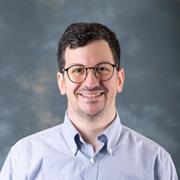
Corey Bregman

Corey Bregman
Research/Areas of Interest: Geometric group theory, low-dimensional topology, CAT(0) spaces

Boris Hasselblatt

Boris Hasselblatt
Research/Areas of Interest: Geometrically motivated hyperbolic dynamics — Hasselblatt's research, undertaken with colleagues from several continents, is in the modern theory of dynamical systems, with an emphasis on hyperbolic phenomena and on geometrically motivated systems. He also writes expository and biographical articles, writes and edits books, and organizes conferences and schools. His publication profile can be viewed at https://mathscinet.ams.org/mathscinet/author?authorId=270790 (with a subscription). Former doctoral students of his can be found in academic positions at Northwestern University, George Mason University, the University of New Hampshire, and Queen's University as well as among the winners of the New Horizons in Mathematics Prize.

Misha Kilmer

Misha Kilmer
Research/Areas of Interest: Numerical Linear and Multilinear Algebra, Scientific Computing, Image Reconstruction and Restoration

George McNinch

George McNinch
Research/Areas of Interest: The structure and representations of algebraic groups
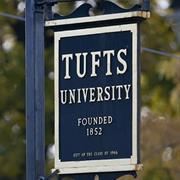
Elizabeth Newman

Elizabeth Newman
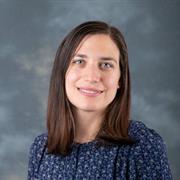
Samantha Petti

Samantha Petti
Research/Areas of Interest: computational biology, algorithms, probability, fitness landscapes, evolution, protein structure, statistical inference

Kim Ruane

Kim Ruane
Research/Areas of Interest: Geometric Group Theory/Topology
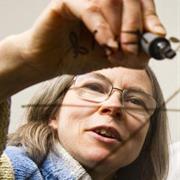
Montserrat Teixidor I Bigas

Montserrat Teixidor I Bigas
Research/Areas of Interest: To each point on a curve, one can often associate in a natural way a line or plane (or higher dimensional linear variety) that moves with the point in the curve. This set of linear spaces is called a vector bundle. Vector bundles appear in a variety of questions in Physics (like the computation of Gromov-Witten invariants) . Moreover, they provide new insights into old mathematical problems and have been used to give beautiful proofs to long standing conjectures as well as striking counterexamples to some others.
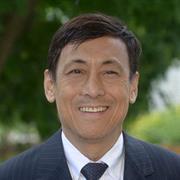
Loring Tu

Loring Tu
Research/Areas of Interest: Algebraic geometry, topology, and differential geometry
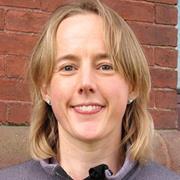
Genevieve Walsh

Genevieve Walsh
Research/Areas of Interest: Hyperbolic manifolds and orbifolds, low-dimensional topology, group actions
